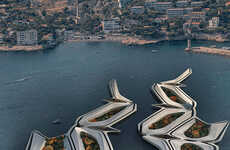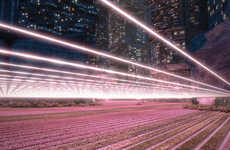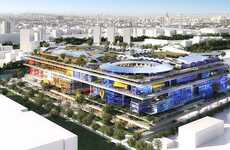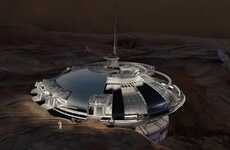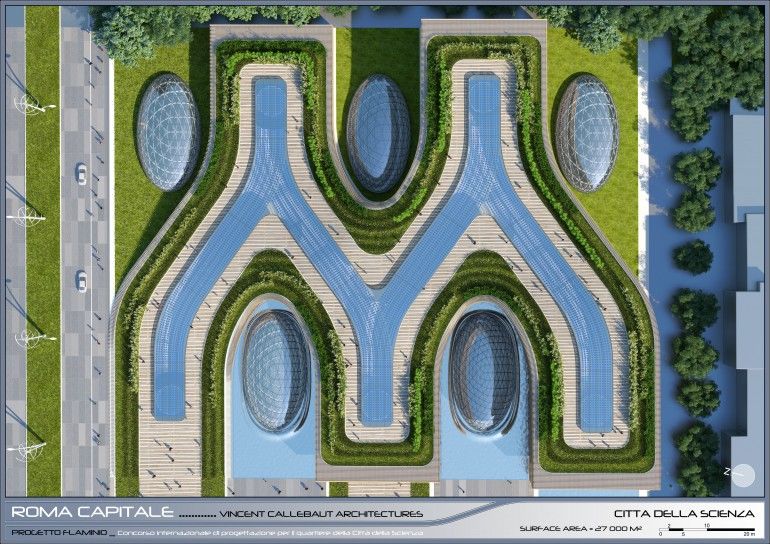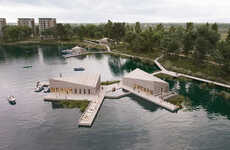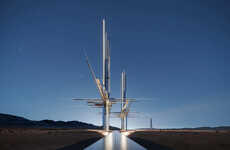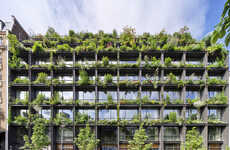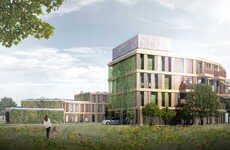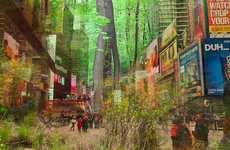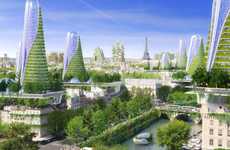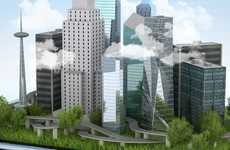
Cita Della Scienza is a Sustainable Eco-District Envisioned For Rome
Rahul Kalvapalle — March 20, 2015 — Eco
References: vincentllebaut.org & gizmag
Citta della Scienza -- or City of Science -- is an upmarket, highly sustainable eco-district envisioned by Vincent Callebaut, as he turns his future towards the Eternal City soon after unveiling his vision for the sustainable Paris of the future. Callebaut's vision involves transforming a large plot of land in Rome's Flaminio quarter into a $286 million upmarket district.
The plan calls for existing industrial and military units to be converted into trendy lofts and indoor gardens. The concept includes space for science exhibits, a sports center with a soccer pitch and tapering residential towers topped by green roofs and solar canopies. The district's upmarket character is added to by art galleries, bars and restaurants.
Cita della Scienza is undoubtedly a pretty ambitious concept, but this kind of outside-the-box thinking is set to be increasingly accepted as architects try to figure out how to maintain urban populations without compromising on sustainability.
The plan calls for existing industrial and military units to be converted into trendy lofts and indoor gardens. The concept includes space for science exhibits, a sports center with a soccer pitch and tapering residential towers topped by green roofs and solar canopies. The district's upmarket character is added to by art galleries, bars and restaurants.
Cita della Scienza is undoubtedly a pretty ambitious concept, but this kind of outside-the-box thinking is set to be increasingly accepted as architects try to figure out how to maintain urban populations without compromising on sustainability.
Trend Themes
1. Sustainable Eco-districts - The concept of creating eco-districts like Citta della Scienza presents opportunities for innovative urban planning and sustainable development.
2. Conversion of Existing Properties - The trend of repurposing industrial and military units for residential and recreational purposes brings possibilities for adaptive reuse and revitalization of urban spaces.
3. Integration of Nature in Urban Areas - The integration of green roofs, indoor gardens, and solar canopies into urban architecture opens doors for innovative approaches to incorporate nature into densely populated areas.
Industry Implications
1. Architecture and Urban Planning - Architects and urban planners have the opportunity to design and develop sustainable eco-districts that prioritize environmental considerations while meeting the needs of urban populations.
2. Real Estate Development - The conversion of existing properties into trendy lofts and recreational spaces offers potential for real estate developers to create unique and sustainable living environments.
3. Green Technology and Renewable Energy - The incorporation of green roofs, solar canopies, and other renewable energy solutions in urban settings creates a demand for innovative green technologies and energy-efficient systems.
4.6
Score
Popularity
Activity
Freshness



